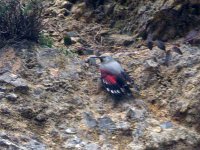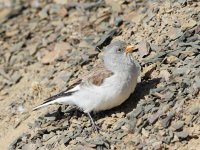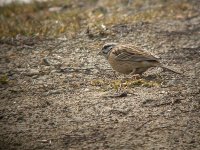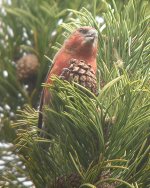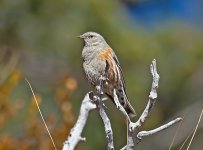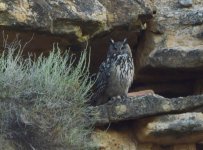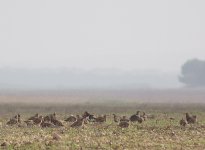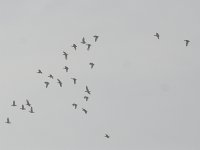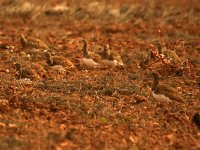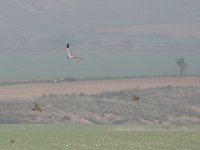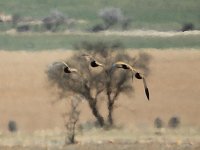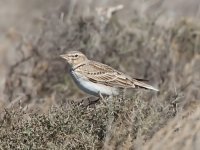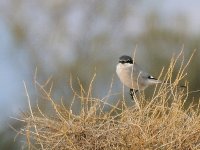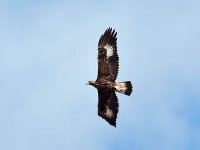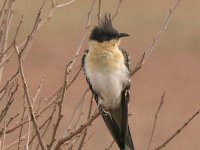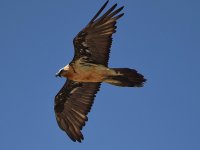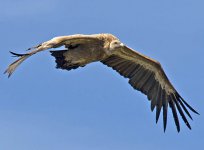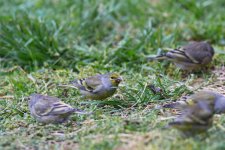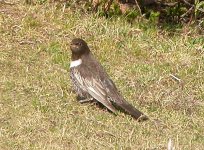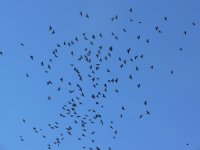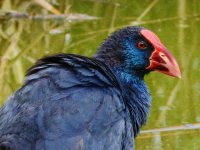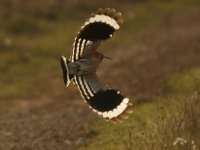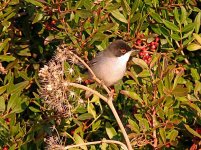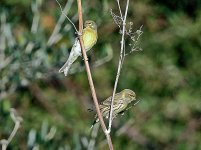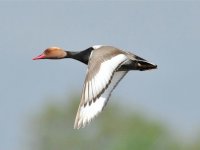A trip report from February 2016 in case anyone is planning to head out for a late self-birding Winter break in Catalonia and Aragon between now and early March.
The area is well-served by a great transport network, endless information on the internet, three airports (including Barcelona) and you can follow key sightings on Twitter (@SpainBirdTours).
As a bonus the area is currently enjoying several overwintering vagrants such as Desert Wheatear, Sociable Lapwing (on the EBRO DELTA) and Hume's Warbler (in BARCELONA). Happy to supply details.
15 - 18 February 2016
DAY 1 - PYRENEES - 15 February 2016
April, Bill and Derek had visited me for 8 days in Spring 2015 and, as their Spring targets were acquired (plus a bonus vagrant Moussier’s Redstart on the Ebro Delta), they promised to return with their friend Paul the following Winter to pick up a full set of seasonal lifers.
We get wintering Wallcreeper in the Garraf and so, with everyone already ensconced in a hotel in Sitges - which is in the Garraf - you might wonder why I collected them at 0630 to head off north to the PYRENEES! Well it’s a matter of predictability and, as I stepped out of the lovely warm glow of the car into the face-shock of the freezing mountain air at 0805, so confident was I that my reliable little friend would show that I pointed to the adjacent cliff, mumbled something like ‘keep looking up there’ and made a beeline to the boot for my flask of hot coffee.
But over-confidence can be a bitch. Best laid plans and all that. Clearly I had over-estimated my chances and, literally as I brought the cup to my lips and felt the steam hit my nose, Paul shouted ‘Wallcreeper!’ and I didn’t get a single sip!
Approaching from its usual direction, it landed top left, clearly its roost not too far away as the first rays of golden sunlight were only just warming the very tip of the cliff. I looked on jealously awaiting its descent (the warmth not the Wallcreeper) and, in the dull light, it took us a minute or so to get everyone on the bird, scuttling and wing-flapping its way, right, across the rock face.
As it happened, we needn’t have been quite so panicky as we watched it in progressively better light for more than half-an-hour, working its way right, leaning into crevices, stopping under a ledge to gobble up some kind of rock caterpillar and, at one point, as they often do, make like a Spotted Flycatcher and dart out to snatch up an airborne insect before returning to more or less the same spot.
As most of this was close enough not to bother with my binoculars, it left my hands free of course, which meant I could nip back to the car and, as the group watched the bird finally disappear low behind an open leafless tree on an adjacent rock further up the track, my freezing fingers tipped the last sip of cold coffee into my down-turned mouth. We guides do suffer.
But not for long! Soon the sun was out in full and, just 15 minutes further up the track we arrived at a long-time favourite haunt of our second target. As we feasted on exactly a dozen Alpine Accentor edging their way picking up invisible morsels along the track-side, we had plenty of time to glean a few other titbits ourselves. Crested, Coal, Long-tailed and Great titbits to be precise. There was a single Rock Bunting about too and several Red-billed Chough, Griffon Vultures and Common Raven circled overhead.
In the mid-distance an Iberian Woodpecker (Picus sharpei or P. viridis sharpei), was watched scaling and picking at the sides of a huge rock as if it were a tree trunk. I’ve witnessed this behaviour before in this species, and on concrete telegraph poles too, but not that I recall in the Green Woodpecker (P. viridis viridis). Perhaps someone has something to add?
Wow! As we hit the top of the valley and drove into an open pass some 20 kilometres further, and 800m higher, up the mountain we, in turn, were hit by a vast, blast of snow-blowing wind. We’re not getting out in that!
“We’re not getting out in that!” is what I was about to say but, suitably, as this day was fast turning into an all-you-can-eat bird-buffet, a single White-winged Snowfinch was thrown over the bonnet of the car and disappeared into the void behind us.
“Anybody tick that? No?”
Never afraid to drive into the void for a client (Note to self: reconsider this) I instinctively reached for the reverse gear when another two birds were thrown over the bonnet after it. This time, however, they appeared to be slapped down, onto the low bank beside the car and… well, they just sat there, not 5m away, under a snow-covered bush. We rolled down the port-side windows and, for a few minutes, marvelled in a fabulous, fabulous little bird - and its simply ridiculous choice of habitat.
It’s not always like this of course.
It was 1030 and we’d already had spectacular views of all three of the group’s three target birds.
“Why did we book four days?”, asked April. “Shhh.”
We decided to leave the higher peaks for a possible return in a couple of days and spent the rest of the day out of the wind, exploring the forest and fields at lower levels to add some trip birds. Not least of these was a stop-off for a party of Red Crossbill, a lifer for someone, and a good few minutes at the village river with one of my all time favourites who always gives you something to watch, White-throated Dipper.
As photos are always nice, I've attached a few from the same route, at the same time of year and, in the case of the Wallcreeper, of the same bird.
To be continued...
DAY 2 - STEPPES (Lleida and Los Monegros) - 16 February 2016
DAY 3 - PYRENEES (Part 2) - 17 February 2016
DAY 1 - GARRAF / MONTSERRAT / LLOBREGAT - 15 February 2016
.
The area is well-served by a great transport network, endless information on the internet, three airports (including Barcelona) and you can follow key sightings on Twitter (@SpainBirdTours).
As a bonus the area is currently enjoying several overwintering vagrants such as Desert Wheatear, Sociable Lapwing (on the EBRO DELTA) and Hume's Warbler (in BARCELONA). Happy to supply details.
15 - 18 February 2016
DAY 1 - PYRENEES - 15 February 2016
April, Bill and Derek had visited me for 8 days in Spring 2015 and, as their Spring targets were acquired (plus a bonus vagrant Moussier’s Redstart on the Ebro Delta), they promised to return with their friend Paul the following Winter to pick up a full set of seasonal lifers.
We get wintering Wallcreeper in the Garraf and so, with everyone already ensconced in a hotel in Sitges - which is in the Garraf - you might wonder why I collected them at 0630 to head off north to the PYRENEES! Well it’s a matter of predictability and, as I stepped out of the lovely warm glow of the car into the face-shock of the freezing mountain air at 0805, so confident was I that my reliable little friend would show that I pointed to the adjacent cliff, mumbled something like ‘keep looking up there’ and made a beeline to the boot for my flask of hot coffee.
But over-confidence can be a bitch. Best laid plans and all that. Clearly I had over-estimated my chances and, literally as I brought the cup to my lips and felt the steam hit my nose, Paul shouted ‘Wallcreeper!’ and I didn’t get a single sip!
Approaching from its usual direction, it landed top left, clearly its roost not too far away as the first rays of golden sunlight were only just warming the very tip of the cliff. I looked on jealously awaiting its descent (the warmth not the Wallcreeper) and, in the dull light, it took us a minute or so to get everyone on the bird, scuttling and wing-flapping its way, right, across the rock face.
As it happened, we needn’t have been quite so panicky as we watched it in progressively better light for more than half-an-hour, working its way right, leaning into crevices, stopping under a ledge to gobble up some kind of rock caterpillar and, at one point, as they often do, make like a Spotted Flycatcher and dart out to snatch up an airborne insect before returning to more or less the same spot.
As most of this was close enough not to bother with my binoculars, it left my hands free of course, which meant I could nip back to the car and, as the group watched the bird finally disappear low behind an open leafless tree on an adjacent rock further up the track, my freezing fingers tipped the last sip of cold coffee into my down-turned mouth. We guides do suffer.
But not for long! Soon the sun was out in full and, just 15 minutes further up the track we arrived at a long-time favourite haunt of our second target. As we feasted on exactly a dozen Alpine Accentor edging their way picking up invisible morsels along the track-side, we had plenty of time to glean a few other titbits ourselves. Crested, Coal, Long-tailed and Great titbits to be precise. There was a single Rock Bunting about too and several Red-billed Chough, Griffon Vultures and Common Raven circled overhead.
In the mid-distance an Iberian Woodpecker (Picus sharpei or P. viridis sharpei), was watched scaling and picking at the sides of a huge rock as if it were a tree trunk. I’ve witnessed this behaviour before in this species, and on concrete telegraph poles too, but not that I recall in the Green Woodpecker (P. viridis viridis). Perhaps someone has something to add?
Wow! As we hit the top of the valley and drove into an open pass some 20 kilometres further, and 800m higher, up the mountain we, in turn, were hit by a vast, blast of snow-blowing wind. We’re not getting out in that!
“We’re not getting out in that!” is what I was about to say but, suitably, as this day was fast turning into an all-you-can-eat bird-buffet, a single White-winged Snowfinch was thrown over the bonnet of the car and disappeared into the void behind us.
“Anybody tick that? No?”
Never afraid to drive into the void for a client (Note to self: reconsider this) I instinctively reached for the reverse gear when another two birds were thrown over the bonnet after it. This time, however, they appeared to be slapped down, onto the low bank beside the car and… well, they just sat there, not 5m away, under a snow-covered bush. We rolled down the port-side windows and, for a few minutes, marvelled in a fabulous, fabulous little bird - and its simply ridiculous choice of habitat.
It’s not always like this of course.
It was 1030 and we’d already had spectacular views of all three of the group’s three target birds.
“Why did we book four days?”, asked April. “Shhh.”
We decided to leave the higher peaks for a possible return in a couple of days and spent the rest of the day out of the wind, exploring the forest and fields at lower levels to add some trip birds. Not least of these was a stop-off for a party of Red Crossbill, a lifer for someone, and a good few minutes at the village river with one of my all time favourites who always gives you something to watch, White-throated Dipper.
As photos are always nice, I've attached a few from the same route, at the same time of year and, in the case of the Wallcreeper, of the same bird.
To be continued...
DAY 2 - STEPPES (Lleida and Los Monegros) - 16 February 2016
DAY 3 - PYRENEES (Part 2) - 17 February 2016
DAY 1 - GARRAF / MONTSERRAT / LLOBREGAT - 15 February 2016
.
Attachments
Last edited:




